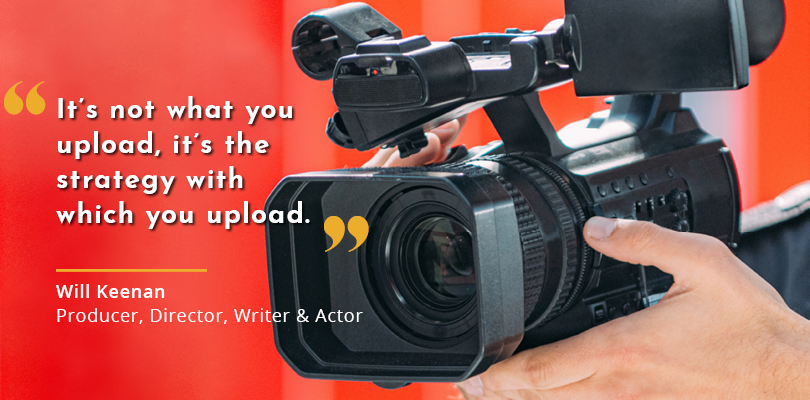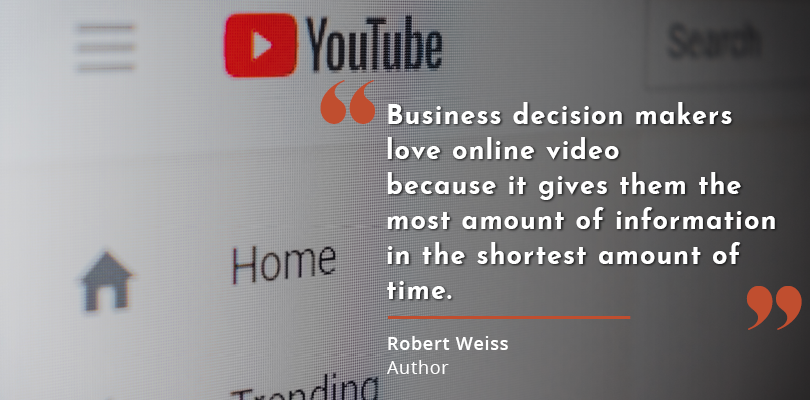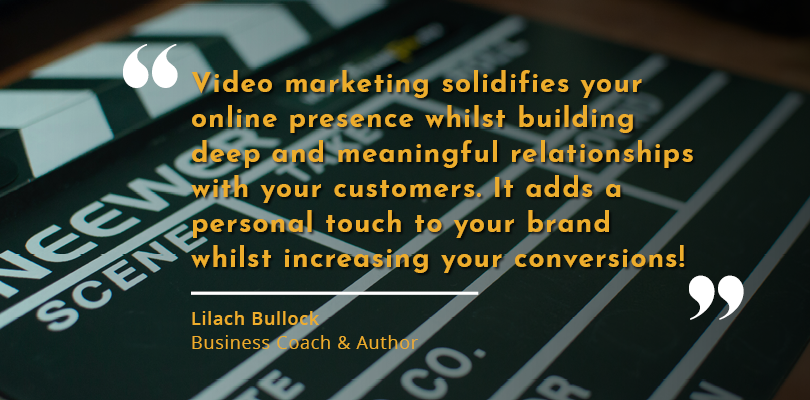Video marketing is a crucial part of the marketing mix, we don’t need to tell you that. If you don’t want to risk falling behind your competition, you need to implement a video strategy in your marketing plans. Especially for your social media content creation. It’s one of the most powerful mediums to attract, convert, and retain clients.
68% of consumers prefer to watch a video to learn about something over reading any form of information. This explains why nearly 90% of people asked in a survey said they want to see more videos from brands in 2021.
Luckily - thanks to editing software and technology - creating videos has become accessible and easy.
In this article, we’re going to explain how to use video marketing for your business. From creation to publication.
4 Ways to produce your video content
There are several ways to produce your video content. But before you get to the fun creation part you need to consider the following: First, you have to decide on the goal of the video. Is it raising brand awareness? Is it driving leads?
Second, you have to determine where to use the video. Are you promoting it on social media? Are you using it for a blog post?
Last, decide which level of production you want. Depending on your budget and your timeline, you have the option to do something with all the bells and whistles or opt for something simpler. Here are four ways you can produce your visual motion content:
- Complete Custom Video Production
- DIY
- Stock Video
- Online Video Makers

1. Complete Custom Video Production
Getting your video custom made means you get exactly the vision you have in mind. You can plan and script anything you want and get a specialist team to turn it into reality. Elements like animated characters, drone footage or futuristic effects can be added. Your possibilities are almost endless. For a video product this detailed and professional, you need to call in the experts.
2. DIY
DIY video options are a tad more limited. You can get creative but only within your own capabilities and equipment - your own camera or phone. Good editing skills can definitely work up something special and personal. This type of video is ideal for customer testimonials or showing your team at work. Especially if you’re on a smaller budget or urgent deadline, this option leaves you with a lot more flexibility. You might enjoy the filming, but not the editing, or you have too many other to-dos on your list? Thanks to great editing software, an expert can take your raw material and make your self-made videos shine.
3. Stock Video
Stock video sites provide a great resource for those who know how to edit. If you are short on time and budget but need something polished and professional a video produced with stock video can be a lifesaver. There are many options and possibilities, but there is always the limitation of you not finding exactly what you were looking for. Clever editing and voiceovers can turn stock video into branded content. Again, getting professional editors involved who can combine your own video with stock video to make a custom end product can be a way to best reflect your vision.
4. Online Video Makers
Online video makers are the perfect option for small productions. You can easily build and edit a video from stock clips or your own material. And there are quite a few free video editors that promise good results. It is tempting to think that this option suits your needs, but since it is predicated on pre-designed templates and tools you might be disappointed by the lack of diversity it offers. Online video makers can be entirely suitable for a project. Yet depending solely on them for video content could cost you more than getting the professionals involved.
What to do with your Video once produced?

Video Hosting Platforms
Before you can start to use your video for marketing, you need to put it somewhere online. This is called video hosting. From there you can share and link your video content to all your other channels. You have a variety of options for hosting. Here are the ones we use and recommend at DMM:
- Youtube: the most well-known and biggest free video hosting site not only in New Zealand but globally. Youtube as a platform allows you to build an audience of subscribers who are more likely to see new videos you upload.
- Vimeo: the second largest video hosting platform. Vimeo differs from Youtube by less advertising and higher quality/resolution. It has premium account options for business accounts that offer better analytics tools and support.
- Wistia: the video hosting platform that gives you the option of having zero ads during your video play. Wistia enables you to customize your options within the platform. Additionally, it offers in-depth analytics tools and support.
Use Video Content for Marketing
There are a number of video types you can produce. The type of video you choose will be influenced by the goals you set at the beginning of the production process. Defining your goals and the type of video will determine where to best use your video.
Your first marketing channel for video content is your website. Here you can display videos in a gallery, a blog post, a testimonial or a product page for detailed information.
For example, you want to create a video that leads to X amount of ticket purchases for an upcoming event. To advertise an upcoming event you choose an information video. The finalised video can then be uploaded on your home page for every website visitor to see and shared to your social channels. (Pro tip: Consider changing the format for social channels from landscape to portrait for a better user experience on a mobile device.)

More reasons to (start) produce Video Content:
- Videos at events, conferences and exhibitions can add an extra wow factor to whatever products or services you are trying to sell
- Videos generate 1200% more shares on social media than text and image content combined
- After watching branded videos on social channels 64% of users make a purchase
- Worldwide more than half the marketing professionals claim video is the content type with the best ROI [Wordstream]
Display your Videos on the Right Platforms
With all this beneficial information, you will want to utilize a greatly produced video in as many places as you can. It is tempting to post it on every platform you can find, but not necessarily wise. Here are five options for your video to be displayed:
- Your website: is always your first stop, and will establish authority. Videos contribute to a better user experience and ranking on Google if implemented correctly.
- Youtube: the benefit of Youtube is that you can easily share the link to the video with your customers via email or newsletter. And your subscribers will see it. Make sure you have a link to Youtube on your website with your social share buttons. You can also choose to do Youtube Ads preroll or inline, as is appropriate to your video.
- Facebook: enables you to post your video straight onto the platform and you can turn it into a Facebook Ad. Making your video content shareable, engaging, and interesting will extend your reach beyond your current following.
- LinkedIn: works the same way as Facebook in this matter but is especially powerful in business contexts. On LinkedIn, you can focus on reaching your business network and their network. You also have options to turn a video into a paid ad to increase its reach.
- Instagram: is the social platform where visuals and videos are key to success. Within your feed, your story, live videos, IGTVs and Reels you can compose visual content of various sizes and characteristics. If you’ve uploaded a long-form video to Youtube, we recommend tailoring it into a short version or a trailer to share it here and link to the original. Since Instagram has been bought by Facebook, you can manage your paid ads through the Facebook Ad Manager.

Choose the right Time and Place for your Videos
Your video marketing strategy determines the time and place for your video to be used. Look at your video content as one part of your overall content marketing strategy. Tracking your social media and/or blogging efforts will help you to include your videos correctly. To get the best results out of your video content it all has to go hand in hand.
Consider where on the buying journey your potential customer is and which video will appeal best to that stage. Use your video content strategically to either attract, convert or close and ultimately, delight your customer.
Implement a call to action (CTA) in each video that drives the user to complete the action you require. For example, to build brand awareness, your video would expose new prospects to your services with a call to action such as “Learn More".
To sum it up
Video Marketing has to be part of your Content Stratgey.
If you’ve read this far - you know video can accomplish a myriad of things. It advertises, it informs, it entertains, it supports the launch of a new product, it is a crucial part of your content marketing strategy. With consumers being more and more visually inclined (16 hours per week is the average time people spend watching videos online) video content can boost your brand’s reputation and ultimately your sales.
So start thinking about goals video marketing can help you reach, find the right type of video that aligns with your brand and needs and create valuable information to share with your prospects and customers to build trust.



